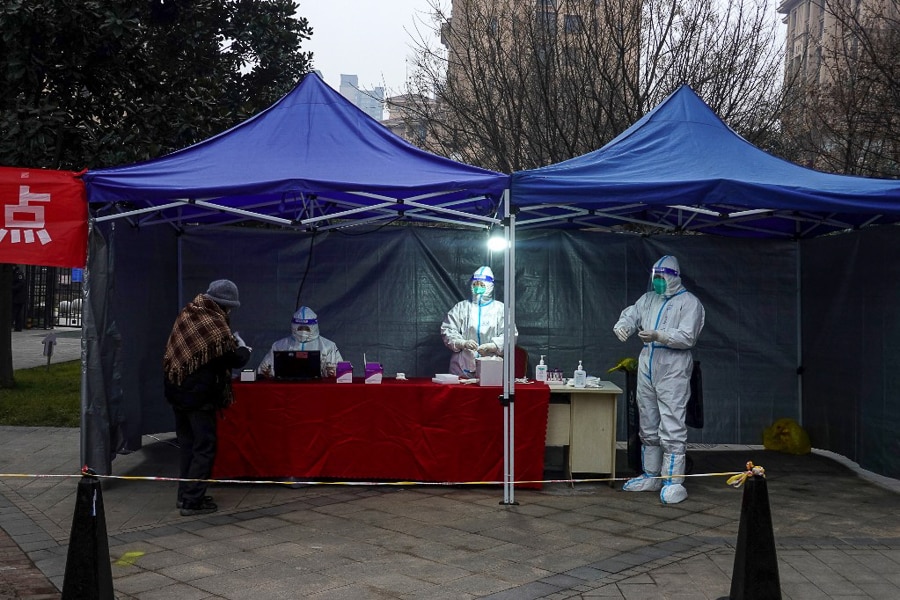
China's latest lockdown shows stubborn resolve on zero Covid-19
China has continued to rely on the same authoritarian virus-fighting methods from early 2020, including strict quarantines, border closings and lockdowns, that have led to food and medical shortages and growing questions about how much longer its zero Covid-19 strategy, the last in the world, can continue
 A resident prepares to undergo a nucleic acid test for the Covid-19 in Xi'an in China's northern Shaanxi province on January 4, 2022.
A resident prepares to undergo a nucleic acid test for the Covid-19 in Xi'an in China's northern Shaanxi province on January 4, 2022.
Image: STR / AFP
Every two days at the University of Xi’an in China, cleaners dressed in white hazmat suits taped tight to their bodies disinfect the dormitory hallways. Zhang Shengzi, a 24-year-old student, said the smell is so pungent she has to wait some time after they have gone before she will open her door again.
She can barely leave her room, let alone campus, and all her classes are online.
Zhang’s university, like the rest of Xi’an, has been under a citywide lockdown since Dec. 22. It is the longest lockdown in China since the first one in Wuhan, where the coronavirus outbreak began almost two years ago.
In scenes recalling the early days of the pandemic, hungry residents have traded coffee for eggs and cigarettes for instant noodles. A pregnant woman and an 8-year-old boy suffering from leukemia are among those who have been denied medical care. People in need of lifesaving medications have struggled to obtain them.
©2019 New York Times News Service







